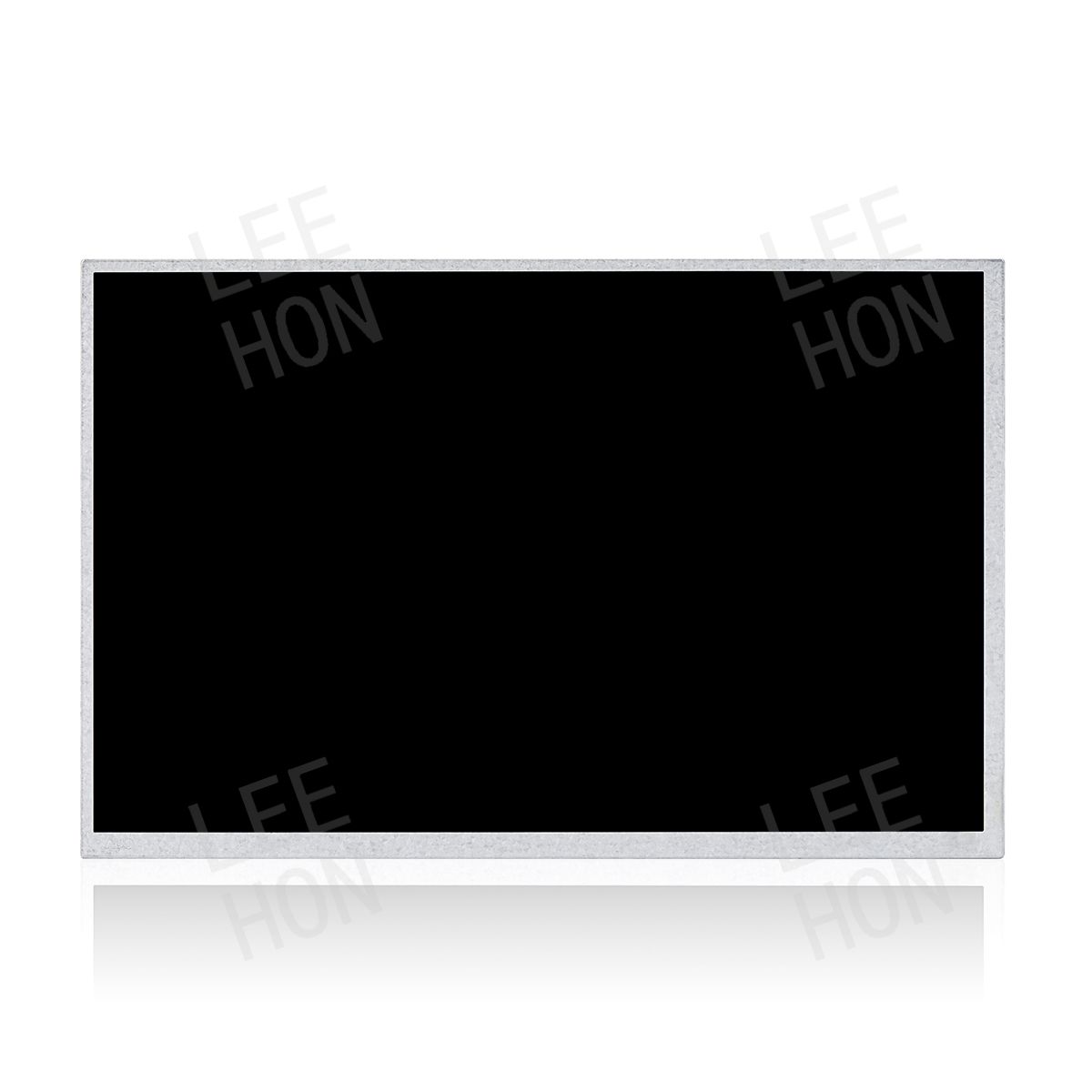Comprehensive Guide to Selecting Industrial LCD Screens for Medical Equipment
News 2025-04-03
I. LCD Screens for Medical Imaging Diagnostic Equipment
Medical imaging diagnostic devices demand the highest standards in industrial displays, requiring a deep understanding of clinical diagnostic needs. For example, DR (Digital Radiography) equipment screens must comply with the DICOM Part 14 standard, support at least 10-bit grayscale (1024 levels), and maintain brightness uniformity within ±10%. Crucially, these screens should feature automatic calibration with built-in sensors to monitor brightness decay and ensure diagnostic consistency. Japanese-made IPS panels are preferred for their superior viewing-angle stability and color gamut coverage (opt for models covering ≥99% Adobe RGB), but ensure response times are below 15ms to avoid motion blur.
Ultrasound equipment has different requirements, prioritizing high refresh rates (≥120Hz) and excellent motion clarity. Medical-grade LED backlight modules should have a 50,000-hour lifespan certification and adaptive ambient light functionality, automatically boosting brightness to 1000 cd/m² in brightly lit operating rooms. Modern ultrasound systems increasingly integrate with endoscopes, so selecting screens with dual HD-SDI and 3G-SDI interfaces enables lossless multi-device image transmission—such as synchronizing ultrasound positioning with laparoscopic views.
CT/MRI diagnostic screens face unique challenges, handling ultra-high resolution (≥5MP) and real-time 3D reconstruction. We recommend 30-inch+ medical LCDs with hardware LUT (Look-Up Table) chips for real-time grayscale conversion and support for MPR (Multi-Planar Reconstruction) split-screen modes. A pro tip: Choose screens with “Soft Copy Preferred” protocols to auto-optimize DICOM display parameters, improving efficiency by over 40% compared to manual adjustments.
II. Operating Room Equipment Displays
Operating room displays form a life-support visualization network, requiring reliability far beyond standard medical scenarios. Minimally invasive surgery monitors must meet Class III medical device certification and IP54 liquid protection. The latest trend is 4K 3D displays (e.g., 32-inch 3840×2160 resolution) with polarized or active-shutter 3D technology, reducing depth perception errors to ≤1mm. However, when integrated with surgical navigation systems, input latency must be under 8ms, necessitating custom scaler chips rather than off-the-shelf solutions.
Anesthesia workstation screens are often underestimated. They require dual visual protection: minimal glare in low-light conditions (surface brightness ≤5 cd/m²) and instant high-brightness alert mode (≥400 cd/m²) for emergencies. Opt for medical-grade capacitive touchscreens with antimicrobial coatings (≥99% efficacy) and glove-compatible operation. A smart solution is pairing them with vital-sign monitors for redundancy, automatically mirroring critical data if one screen fails.
Hybrid OR displays represent the pinnacle of integration, combining DSA, ultrasound, and endoscopy feeds. Use multi-screen controllers with medical-grade narrow-bezel LCDs (seam ≤3.5mm), supporting PIP (Picture-in-Picture) and PBP (Picture-by-Picture). Future-proof options include HDR10-capable screens, achieving 200,000:1 dynamic contrast to simultaneously highlight bright angiograms and dark tissue details in vascular interventions.
III. Patient Monitoring Displays
ICU central station displays must endure 24/7 operation, requiring industrial LED backlights (MTBF ≥100,000 hours) and wide-temperature tolerance (0–50°C). Recent studies show VA panels with local dimming reduce waveform power consumption by 30% while enhancing ST-segment ECG clarity. Smart integration includes auto-switching to “respiratory sync view” when ventilator data is received, displaying airway pressure and SpO₂ trends side by side.
Bedside monitors benefit from antimicrobial advances. Choose screens with anti-static coatings (surface resistance ≤10⁶Ω) to cut dust adhesion by 75%. Touch accuracy is critical—ensure ≤1.5mm error using projected capacitive tech, not infrared. An innovative feature is syncing with smart infusion pumps: dose adjustments trigger dual-verification pop-ups with timestamped logs.
Mobile monitors demand environmental adaptability, balancing sunlight readability (≥1000 cd/m²) and night mode (≤5 cd/m²). Reflective LCDs with hybrid backlighting slash power use by 80% outdoors. When linked to ER systems, RFID-enabled screens should instantly load patient wristband data without disrupting real-time monitoring.
IV. Laboratory Equipment Displays
Biochemistry analyzer screens excel in data visualization. Opt for 21:9 ultra-wide panels, splitting reaction curves and tabular data. Ensure ΔE<2 color accuracy with per-unit calibration reports. Multi-user presets boost efficiency by ~25%, allowing personalized layouts.
Hematology analyzers need RGB-LED backlights (not standard white) to differentiate basophils from lymphocytes. Advanced models integrate digital microscopy with oleophobic coatings (contact angle >110°) to repel immersion oil. When connected to LIS, screens should auto-prompt Westgard rule checks pre-analysis.
PCR screens require “touch-lock” during reactions (physical buttons remain active). Temperature gradients benefit from pseudo-color displays (100% sRGB, 10-point calibration). NFC-enabled models streamline workflow by scanning to load amplification protocols.
V. Therapeutic Equipment Displays
Radiotherapy planning screens must meet IEC 61223-3-5. A dual-screen setup is ideal: a 32-inch 4K CAxP panel for dose clouds and a 24-inch IPS screen for records. Radiation shielding (≥0.5mmPb lead equivalent) and fiber-optic interfaces are mandatory. Smart linking syncs DVH charts with CT slices post-IMRT planning.
Dialysis screens follow ISO 23500, featuring “foolproof” knobs+buttons and context-aware UIs. PMOLED backup screens ensure parameter visibility during failures. Central system integration enables real-time drug inventory tracking.
Ventilator displays need haptic feedback (≥2N activation force) to prevent errors. Waveform latency must be ≤50ms. “Smart ventilation” modes highlight asynchrony and suggest adjustments, reducing reintubation rates by 30%.
VI. Sterilization & Supply Displays
Autoclave screens withstand 20–95% RH humidity and 70°C surface temps. Glove-compatible touch (≥3mm nitrile, 200Hz sampling) is essential. Smart features block new cycles until bio-test results are confirmed.
Instrument-tracking displays endure 20,000+ alcohol wipes (hardness ≥7H). Fog-resistant, fully laminated screens stay clear in steam. Gantt charts visualize workflow delays with color alerts.
Laundry system screens repel fibers (nanocoating, contact angle >100°). Integrated RFID logs staff IDs during linen handling. Real-time load/water data prevents machine overloads.
VII. Emerging Medical Displays
Surgical Robot 3D Consoles demand 4K@120Hz with ≤5ms lag. Eye-tracking OLEDs reduce fatigue by adjusting parallax. Force feedback integration shows 0.1N-resolution tool vectors.
AI Diagnostic Screens need 4096-level stylus input for annotations. Dual-color modes (6500K for analysis, 5000K for consultations) enhance usability. PACS integration highlights AI-detected anomalies.
Telemedicine Screens require HEVC decoding for 1080p60 streaming at 10Mbps. “Audio-visual sync” aligns speaker positions with audio, cutting miscommunication by 30%. Electronic stethoscope integration displays cardiopulmonary sounds alongside video.

